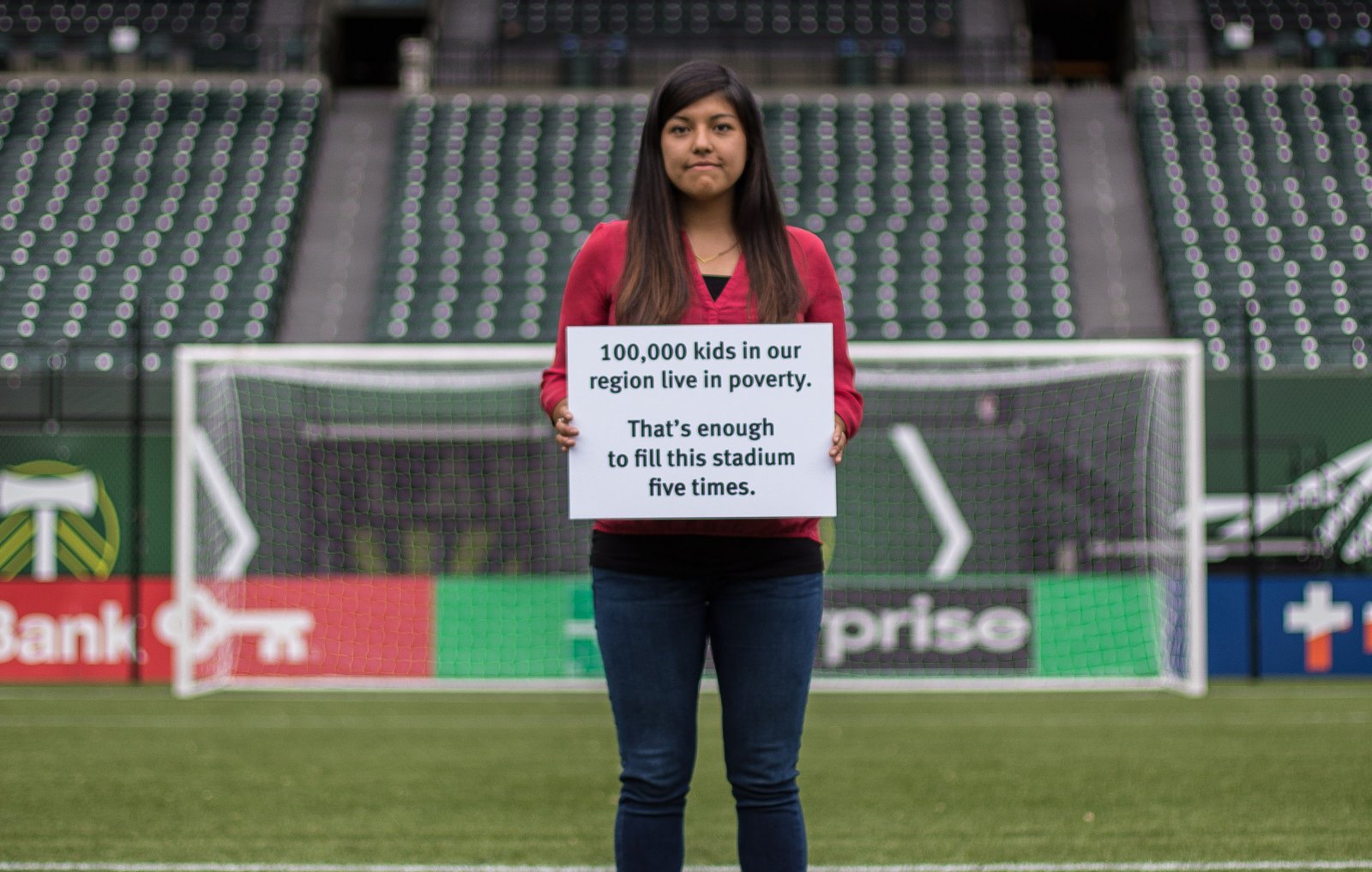Wednesday, May. 13, 2015

Pov-er-ty /pävǝrdē/ noun | the state of being extremely poor; 100% FPL or $24,250 annual income a family of four
Before you read another word, let me confess that I don’t have the answer to the title of this post. You’re not going to find a magical silver bullet in these words that will heal a complex and systemic, yet very personal challenge, facing our community. There are those with far more expertise who can attempt to address that subject.
I ask the question because I wonder it myself. It’s a noble goal, to break the cycle that leaves children without a stable home environment. A noble goal to feed their hungry stomachs and set them on a more stable path than the one they currently walk. But, is it possible?
According to Multnomah County’s 2014 Poverty Report, 23 percent of the county’s children live in poverty. Poverty rates in diverse communities are even higher with more than half of the county’s African American children counted among this group. Sadly these statistics are growing much faster than the actual child population, meaning each year an increasing number of children find themselves falling below the poverty line.
I hate even using the term poverty line. When I was a television news reporter, I met many of these families and the Federal Poverty Level (FPL) was the farthest thing from their minds. The line for them was the wait for food at a local pantry or shelter. It was the hard plastic chairs in a local housing office as they tried to keep their children entertained through the monotony of appointment numbers being called – now serving number 234. The poverty line was the hope that their underpaying job might provide a small raise to help them better provide for their family. The myth that poverty is always synonymous with unemployment is simply that, a myth. There are smart, educated and hardworking individuals who are living in poverty with their children.
Recently, Regence BlueCross BlueShield of Oregon, alongside twenty local corporate partners, joined United Way of the Columbia-Willamette to put a stake in the ground. Through a campaign called More than 24 (>24), we hope to encourage local businesses, community groups and individuals to give more, do more and be more in an effort to break the cycle of childhood poverty in the Portland metro.
The initiative encourages us all to find opportunities to volunteer in support of projects that help kids and families living in poverty. If time to roll up your sleeves is scarce, United Way’s Breaking the Cycle Fund has been established to receive financial contributions. If time and money is beyond your means, simply tell a friend why breaking this cycle is important to you and amplify your voice through social media using the hashtag #morethan24.
As Oregon’s largest health insurer, this issue leads directly to Regence’s not-for-profit mission of service to our members and community. Poverty directly contributes to poor health. Rates of asthma, diabetes, cancer, and heart disease are all shown to be higher in communities with low income levels. According to a study commissioned by the Connecticut Commission on Children, kids growing up in poverty are at greater risk for physical disabilities, learning disabilities and challenges with cognitive development. This is every bit a health issue as it is an equity issue.
I told you that you weren’t going to find a silver bullet in this post. But through United Way’s >24 initiative, and through individual and communal efforts being put forth every day all around us, I believe we can each find an avenue to make a difference. I ask that you’d consider joining us in this noble cause as perhaps the answer to the title of this post lives in the collective impact of us all.
You can join the >24 movement and make a real difference for kids and families in our region! Lend your time, voice, or funds today.
